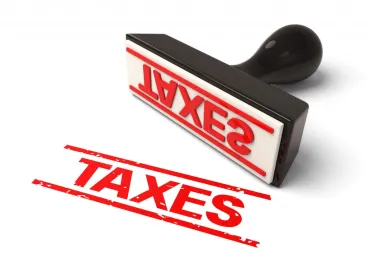On August 21, 2018, the Internal Revenue Service (“IRS”) released Notice 2018-67 (the “Notice”), addressing issues relevant to tax-exempt organizations arising under new Section 512(a)(6) of the Internal Revenue Code (the “Code”), promulgated pursuant to the 2017 U.S. tax legislation that is commonly referred to as the “Tax Cuts and Jobs Act.” Section 512(a)(6) requires tax-exempt organizations to compute unrelated business taxable income (“UBTI”) separately with respect to each unrelated trade or business, and precludes the ability to use losses from one trade or business to offset income from a separate trade or business. This new law generally should not impact governmental pension plans that take the position they are exempt from UBTI.
As discussed in more detail below, the Notice allows a tax-exempt organization to treat unrelated businesses held through multiple partnerships as a single unrelated business for this purpose, as long as the tax-exempt organization and certain related persons either (1) directly hold no more than 2% of the capital and profits of the applicable partnership or (2) directly hold no more than 20% of the capital of the applicable partnership and do not have “control or influence” over the applicable partnership. Accordingly, tax-exempt investors may limit their investments in private investment funds to meet one of these safe harbors.
In addition, the Notice confirms that global intangible low-taxed income (“GILTI”) generally does not constitute UBTI.
The provisions of the Notice discussed below regarding aggregation of partnership interests and identification of a separate trade or business may be relied upon until proposed regulations are published.
Background
Section 511 of the Code imposes a tax on the UBTI of organizations that are otherwise exempt from federal income taxation. UBTI is gross income derived by any tax-exempt organization from any unrelated trade or business regularly carried on by it, less deductions directly connected with the carrying on of such trade or business. UBTI includes “unrelated debt-financed income.” An unrelated trade or business is any trade or business that is not substantially related to the exercise or performance of the tax-exempt organization’s “tax-exempt purpose” (i.e., the charitable, educational or other purpose or function that provides the basis for its federal income tax exemption).
Pursuant to Section 512(c) of the Code, where a tax-exempt organization is a partner in a partnership that regularly carries on a trade or business unrelated to the tax-exempt organization’s tax-exempt purpose, the tax-exempt organization must include in its UBTI its share of partnership gross income (whether or not the income is actually distributed to the organization) and deductions directly connected with such income.
Tax-exempt organizations exclude from the calculation of UBTI gross income from dividends, interest, annuities, royalties, rents, and gains and losses from the sale or exchange of property pursuant to Section 512(b) of the Code. However, under the “unrelated debt financed income” rules, some or all of such income may be taxable to a tax-exempt organization if the asset giving rise to such income has “acquisition indebtedness.”
New UBTI Computation Rule
Prior to the enactment of Section 512(a)(6), if a tax-exempt organization derived income from multiple unrelated businesses, UBTI was calculated by aggregating the gross income and gains, net of expenses and losses, from all unrelated businesses. Pursuant to Section 512(a)(6), for taxable years beginning after December 31, 2017, UBTI must be computed separately with respect to each unrelated trade or business, and the UBTI as separately computed for each trade or business cannot be less than zero for any such trade or business. As a result, tax-exempt organizations can no longer use losses or expenses from one unrelated trade or business to offset gains or income from another unrelated trade or business.
General Guidance for Separate Trades or Businesses
When enacting Section 512(a)(6), Congress did not specify how to identify separate unrelated trades or businesses. Unfortunately, the general approach of the Notice is not much clearer, simply providing that tax-exempt organizations can rely on a reasonable, good-faith interpretation of Sections 511 through 514 of the Code and should consider all “facts and circumstances” when determining separate unrelated businesses (although the Notice acknowledges that further guidance requires a “more administrable method.”) The Notice does, however, provide that the North American Industry Classification System (“NAICS”) six-digit codes may be used to make such determination until regulations are published.
The NAICS is an industry classification system for purposes of collecting, analyzing, and publishing statistical data related to the U.S. business economy, and tax-exempt organizations are already required to use NAICS codes when describing their unrelated trades or businesses pursuant to annual tax reporting requirements. This system, however, was not designed for this purpose, and there are many activities that do not have a specific corresponding NAICS code, and also situations in which NAICS codes separate what would otherwise intuitively be considered related activities. There is also potential for abuse, as tax-exempt organizations could begin to overuse the catch-all NAICS code “900099,” typically reserved for situations where none of the other NAICS codes accurately describe the activity.
Special Rule for Partnerships
The Notice provides a special rule that allows tax-exempt organizations to treat all “qualifying partnership interests” as a single trade or business. For these purposes, a partnership interest is a qualifying partnership interest if the tax-exempt organization (and its disqualified persons, supporting organizations, and controlled entities) either (1) directly holds no more than 2% of the profits and capital of the partnership or (2) directly holds no more than 20% of the capital of the partnership and lacks “control or influence” over the partnership (the “2 or 20 Test”). For purposes of determining ownership of partnership capital and/or profits under the 2 or 20 Test, the ownership percentage is based on an average of the tax-exempt organization’s ownership of the partnership at the beginning and end of the partnership’s tax year (or the tax-exempt organization’s ownership of the partnership at the beginning and end of the ownership period in the applicable year, where the tax-exempt organization does not hold an interest in the partnership for the entire year).
In determining the existence of “control or influence,” all facts and circumstances are relevant, including (1) having the ability to require the partnership to perform, or refrain from performing, any act that significantly affects the operations of the partnership; (2) participating in the management of the partnership; (3) conducting the partnership’s business; and (4) having the power to appoint or remove any of the partnership’s officers, directors, trustees, or employees. Because of the vagaries of the “control or influence” requirement, tax‑exempt organizations should review any voting or blocking rights they may have on the activities of a partnership and may not want to hold LPAC seats or have special voting rights.
As a result of the inability to net losses across separate unrelated businesses and the significant administrative burden of determining and reporting separate businesses, many tax‑exempt investors may limit their investments in private investment funds to well below 20% of capital (to provide a “cushion” for related persons who might also be counted) or, for those partnership interests where there are concerns about meeting the control or influence test, to be well below 2% of capital and profits (with a similar “cushion”).
Transition Rule
Acknowledging that it may be difficult for a tax-exempt organization to modify its investment in an existing partnership to satisfy the 2 or 20 Test, the Notice provides a transition rule for partnership interests acquired prior to August 21, 2018. Under this transition rule, a tax-exempt organization may treat each such partnership interest as comprising a single trade or business, regardless of whether the partnership conducts more than one trade or business (either directly or indirectly through lower-tier partnership interests). The transition rule applies without regard to the tax-exempt organization’s ownership percentage in the partnership or whether it has control or influence over the partnership.
The transition rule by itself does not appear to permit a tax-exempt organization to then aggregate existing partnership interests, which could lead to significant administrative complexity.
GILTI
New Section 951A of the Code requires each U.S. shareholder of any controlled foreign corporation to include its share of GILTI in gross income for the taxable year. The Notice confirms that for purposes of calculating UBTI, an inclusion of GILTI will be treated as a dividend and thus generally excluded from UBTI.
Request for Comments
The Treasury Department and the IRS have requested comments on the application of Section 512(a)(6), due by December 3, 2018. As a result, regulations may differ from the guidance set forth in the Notice.








 />i
/>i

